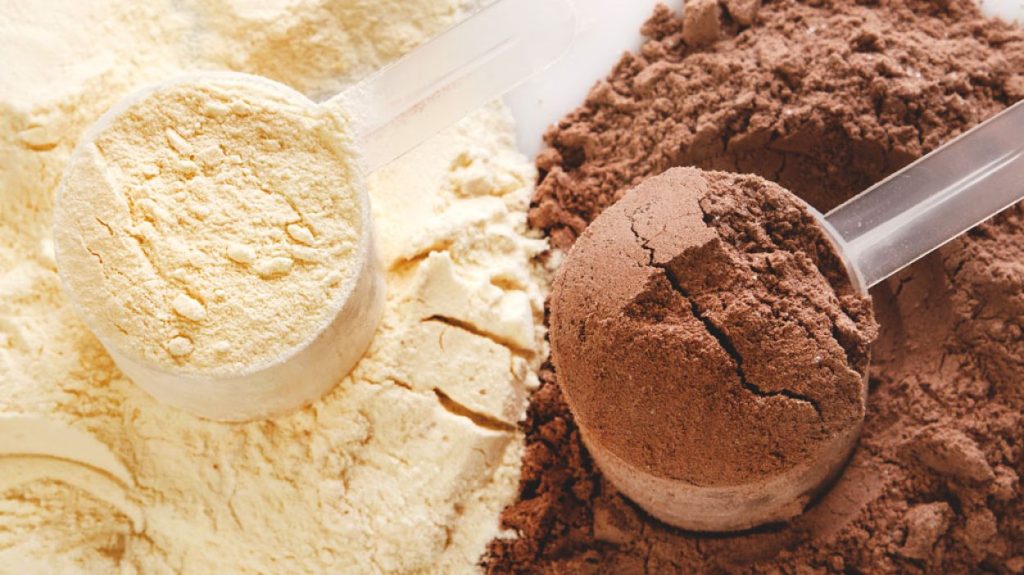Hello and welcome to the Stepwise Enhanced Blog Post Series. In this series we will explore a number of nutrition topics with the simple goal of providing you with more information. This series is meant to be an educational supplement to your current Enara program as we will dive deeper into topics than a traditional appointment window may allow. The third installment focuses on protein powder including plant-based options, and is a continuation of our exploration into the world of protein.
This installment of the series will discuss what to look for if you are considering a plant-based protein supplement. We will briefly compare these products to their animal based counterparts as well as discuss some concepts which are important to understanding protein supplements. Don’t you just love protein?
But first, a side note: The goal here is not to necessarily encourage you to purchase a protein supplement. If your protein intake is already adequate to meet your needs, you do not necessarily need to go purchase one of these products. Please view this information as a resource!
If you will remember back to last time, we discussed the concept of complete proteins. To summarize, animal protein sources are superior to most plant based sources in essential amino acid (EAA) content and digestibility. I noted, however, that the body’s ability to use the plant based protein was dependent on the processing of the food. Let’s explore that concept.
Processing, in this case, can help to free the protein from what are called anti-nutritional factors. Anti-nutritional factors can reduce the availability of nutrients to the body and/or inhibit the utilization of nutrients in the body (1). In other words, their effects are contrary to optimum nutrition (2) as our bodies aren’t able to use all the nutrients the food contains because of them. Real antagonists. Once freed from these anti-nutritional factors via processing methods, however, the digestibility of the plant-based protein increases. Our bodies can use the protein more effectively once this occurs.
Processed foods, it should be noted, are not generally what we recommend. In many cases processing has no regard for healthful qualities of food, such as fiber, callously tossing it to the wind. For that matter, some foods undergo a metamorphosis during processing and become an entirely new food on the other side. Even worse, healthful qualities of the food are sometimes replaced with less than ideal qualities, like sugar and saturated fats. Whole fresh foods, as a rule of thumb, are generally better.
In this case though we have an exception on our hands. We are exploring proteins which have been extracted from the foods in which they naturally appeared. These are called protein isolates and concentrates.
Let’s first define isolates and concentrates as they are not technically interchangeable. A protein concentrate can vary widely in protein content and is commonly defined as a protein product that is 29-80% protein by dry weight. Isolates, on the other hand, are typically more protein-dense as they undergo additional filtration steps. These steps yield a product that is more pure in terms of protein content, usually greater than 90% protein (3).
Before we get to the namesake of this post, plant based protein products, let’s first discuss what is likely the most popular protein supplement: whey protein.
Whey Protein
Whey, as you may know, is a milk protein. There are two types widely available on the market: whey protein isolate and whey protein concentrate. Whey protein concentrate, as we touched on earlier, is less protein-dense than its isolate counterpart. Taking up the remaining space in the product are more carbohydrates, including lactose, and fat. This is a major difference among the two as the lactose content of concentrate is higher than isolate. This may mean a lot to the digestive health of some, and less to others, but it is important to note nonetheless. Whey concentrate is typically cheaper than isolate as well. Unsurprisingly, as it is more expensive, whey protein isolate is considered the gold standard for muscle growth. It has the requisite EAA’s in abundance and on top of that it is quickly and easily absorbed by the body (4). Furthermore, it has another quality which helps its case for superiority: a high leucine content.
Leucine

A key factor in muscle growth and repair is the essential amino acid leucine. Leucine classifies as a branched chain amino acid due to its molecular structure. Leucine is quite popular in the world of muscle building for its contributions to muscle growth. A widely accepted recommendation is to ensure your protein has an adequate amount of leucine in it. This would be at least 3g (4). Whey, along with its complete EAA profile and availability to the body, shines bright compared to other protein sources as the gold standard largely because of its leucine content. The lack of leucine is often a limiting factor in plant-based proteins.
Alright, on to plant-based sources.
Plant-Based Protein
Once plant based proteins are freed from those anti-nutritional factors we discussed, they have been shown to have a digestibility close to that of animal based sources (5). Digestibility, however, is not the only piece to the puzzle. There is still the issue of the EAA’s and those pesky limiting factors. Unfortunately at the time of this writing, the jury is still largely out on how plant-based blends (from isolates and concentrates) compare to animal-based sources, like whey for example. This is partially due to a lack of research focusing on plant-based isolates (6). Even with the lack of research, the concept of the two being comparable is a promising one. Protein blends with adequate EAA’s, including adequate leucine, may closely replicate traditional animal sources, such as whey. That’s great but what should you look out for in these products?
First, it’s important to remember that powders classify as a dietary supplement meaning they are not regulated the same way food is. It’s good practice to look out for third-party certification such as from NSF International on the label (7). Next, scan the ingredient list. Those with multiple plant based sources are ideal as this will allow for a complementary blend of EAA’s. It should be noted that soy protein isolate functions well as a standalone protein source. It is an exception in the realm of plant-based proteins. It is digested well and has a higher leucine content than other plant-based protein sources. While you are in the miniscule font of the ingredients, it’s good practice to check which type of sweetener is used as well. Afterall, the product likely would not sell if it were unsweetened. Sweeteners used could range from artificial sweeteners to sugar alcohols. Natural extracts such as stevia or monk fruit could also be used. If you want to avoid the synthetic artificial stuff or don’t tolerate sugar alcohols well, this practice will allow you to find out what’s in the product. Plus, it’s good to know what you’re buying with prices as they are. Buying bags or cans of these products can feel like a commitment. For protein content, aim for 20-30g protein per serving and 3g leucine, if possible.
In closing, these products are by no means cheap, and price should play some role in your comparison. Of course, your selection should be individualized. Different powders and products will exhibit different responses from the stomach from person to person. The importance of this factor goes without saying.
Again, the aim of this post is not to say you need one of these products. If your protein intake is adequate without them, you do not necessarily need to go buy one. Whole foods will get you what you need perfectly well, granted you are getting enough of the right foods. Please consult with your dietitian or health coach if you have any concerns regarding your protein intake.
Ultimately, there are a few factors to mentally juggle if you are considering a plant-based protein product. Hopefully this post provided you with some confidence in your juggling skills.
References
1. Yacout MHM. Anti-nutritional factors & its roles in animal nutrition. J Dairy Vet Anim Res. 2016;4(1):237-239. DOI: 10.15406/jdvar.2016.04.00107; Accessed October 15, 2021.
2. Anti-Nutritional Factors. Prog Drug Res. https://pubmed.ncbi.nlm.nih.gov/26939264. 2016; 71: 43-7. Accessed October 15, 2021.
3. Jager R, Kerksick CM, Campbell BI, et al. International Society of Sports Nutrition Position Stand: protein and exercise. JISSN. 2017; 14(20). https://doi.org/10.1186/s12970-017-0177-8; Accessed October 11, 2021
4. Davidson K, Rose K. Plant-Based Protein vs. Whey Protein: Which is Better? Healthline. https://www.healthline.com/nutrition/whey-vs-plant-protein; Published July 19, 2021; Accessed October 13, 2021.
5. Van Vliet S, Burd NA, van Loon LJC. The skeletal muscle anabolic response to plant- versus animal- based protein consumption. J of NUTR. 2015; 145(9). https://doi.org/10.3945/jn.114.204305; Accessed October 12, 2021.
6. Nutritional benefits of plant based proteins taking root with consumers. Kerry Health and Nutrition Institute. https://khni.kerry.com/news/blog/nutritional-benefits-of-plant-proteins-taking-root-with-consumers/. Published July 13, 2020; Accessed October 15, 2021.
7. Gelsomin E. The scoop on protein powder. Harvard Health Blog. https://www.health.harvard.edu/blog/the-scoop-on-protein-powder-2020030918986; Published March 9, 2020; Accessed October 14, 2021.



